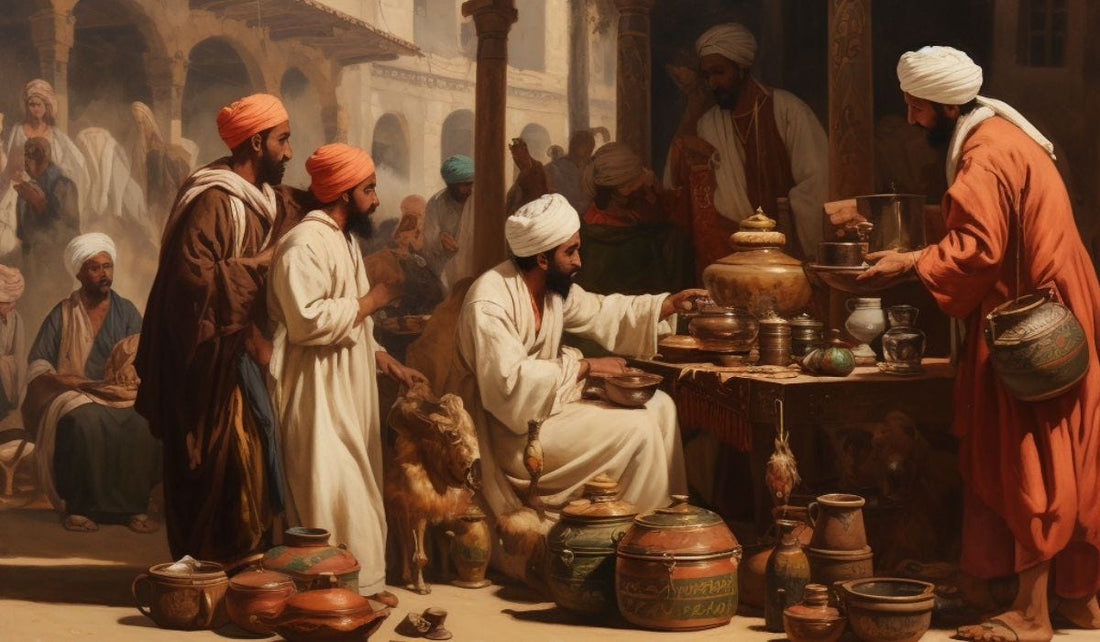Moroccan ceramics, renowned for their vibrant colors, intricate geometric patterns, and deep cultural roots, have long been a source of inspiration beyond the realm of craft. These artifacts, steeped in tradition, have found their way into literature and poetry, serving as symbols of identity, history, and transcendence. Let’s explore how these exquisite creations influence the written word.
A Portal to the Past
The art of Moroccan ceramics is deeply intertwined with the country’s history. Writers often use the imagery of a traditional Moroccan zellij tile or an intricately painted vase to evoke a sense of timelessness. For example, in novels that explore themes of diaspora or cultural heritage, the ceramic serves as a tangible link to a homeland—a piece of the past preserved in clay and glaze.
In Laila Lalami’s The Moor’s Account, the echoes of tradition and craftsmanship surface:
"The clay under my fingernails felt like the earth of my village, warm and alive, whispering stories of where I came from."
A handmade tagine might evoke a family’s shared meals, revealing layers of generational storytelling:
"The aroma of saffron rose from the pot, carrying the voices of my ancestors with it."
Poetry in Patterns
Moroccan ceramics, with their mesmerizing symmetry and vivid hues, often mirror the rhythmic structures of poetry. The recurring motifs of stars, arabesques, and floral designs invite comparison to the repetitive and meditative quality of traditional Arabic verse.
In the poetry of Mohammed Bennis, themes of light, form, and texture resonate with the aesthetic of Moroccan pottery. His poem Fragments of a Clay Jar reads:
"Light dances on the edges of the clay,
its curves singing the songs of silence.
The hands of the potter know the rhythm
of stars and dust, of beginnings and ends."
The interplay of shadows and colors in his verses evokes the dappled sunlight on a mosaic fountain in Marrakech:
"A shard of blue whispers of the sea,
its broken edges yearning for unity."
Metaphors in Clay
Ceramics are often used metaphorically in literature. A cracked vase might symbolize fragility, resilience, or the passage of time, while a perfectly glazed dish could represent harmony or unity. Moroccan ceramics, with their rich cultural associations, add an additional layer of meaning.
In the works of Tahar Ben Jelloun, ceramics appear as vessels of both utility and beauty. In The Sand Child, a simple bowl becomes a symbol of resilience:
"The bowl had been mended, its cracks running like veins—
proof that it had lived, and proof that it had endured."
They carry stories, not just food or water, highlighting the intersection of the functional and the sublime.
"Within the glaze, you can see the reflection of the maker’s dreams,
frozen in time yet alive with intention."
A Global Influence
The influence of Moroccan ceramics extends beyond Moroccan writers and poets. Western authors and artists, enchanted by Morocco’s aesthetic heritage, often weave these elements into their narratives. In Edith Wharton’s In Morocco, the vibrancy of Moroccan artistry shines through:
"The walls were covered with mosaics so intricate they seemed woven rather than set in place, their blues and golds capturing the brilliance of the Moroccan sun."
Her vivid descriptions not only paint a picture of Morocco’s physical beauty but also underscore its cultural richness.
"Every dish, every vase seemed to hold not only its contents but also the history of the hands that shaped it."
The Writer’s Muse
For contemporary writers, Moroccan ceramics can serve as a muse. A ceramic’s surface might inspire a description of texture or color in prose, while its history could spark a story of craft, trade, or tradition. Writers who visit Moroccan cities like Fez or Safi often find themselves captivated by the sights and sounds of the pottery workshops, translating this sensory experience into vivid literary imagery.
Moroccan ceramics, with their timeless beauty and cultural depth, are more than just decorative or utilitarian objects; they are storytellers in their own right. In literature and poetry, they transcend their physical form, becoming symbols of heritage, creativity, and human connection.
Whether as a metaphor, a muse, or a memory, these ceramics continue to leave their imprint on the written word, bridging the tangible world of craft with the intangible world of ideas. So, the next time you hold a hand-painted Moroccan plate or gaze at a mosaic, consider the stories it carries—not just of the artisan who crafted it, but of the countless writers and poets it has inspired.

